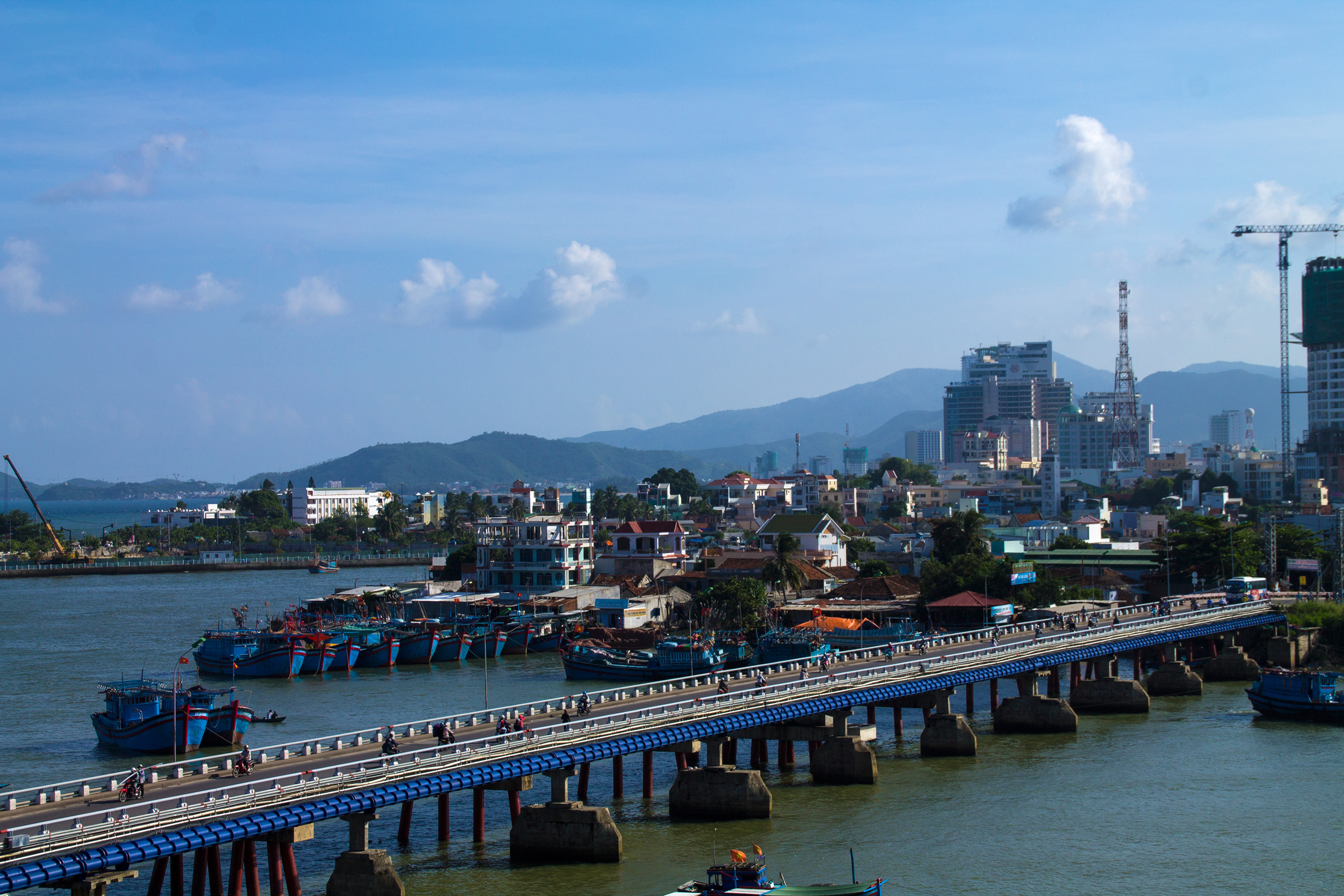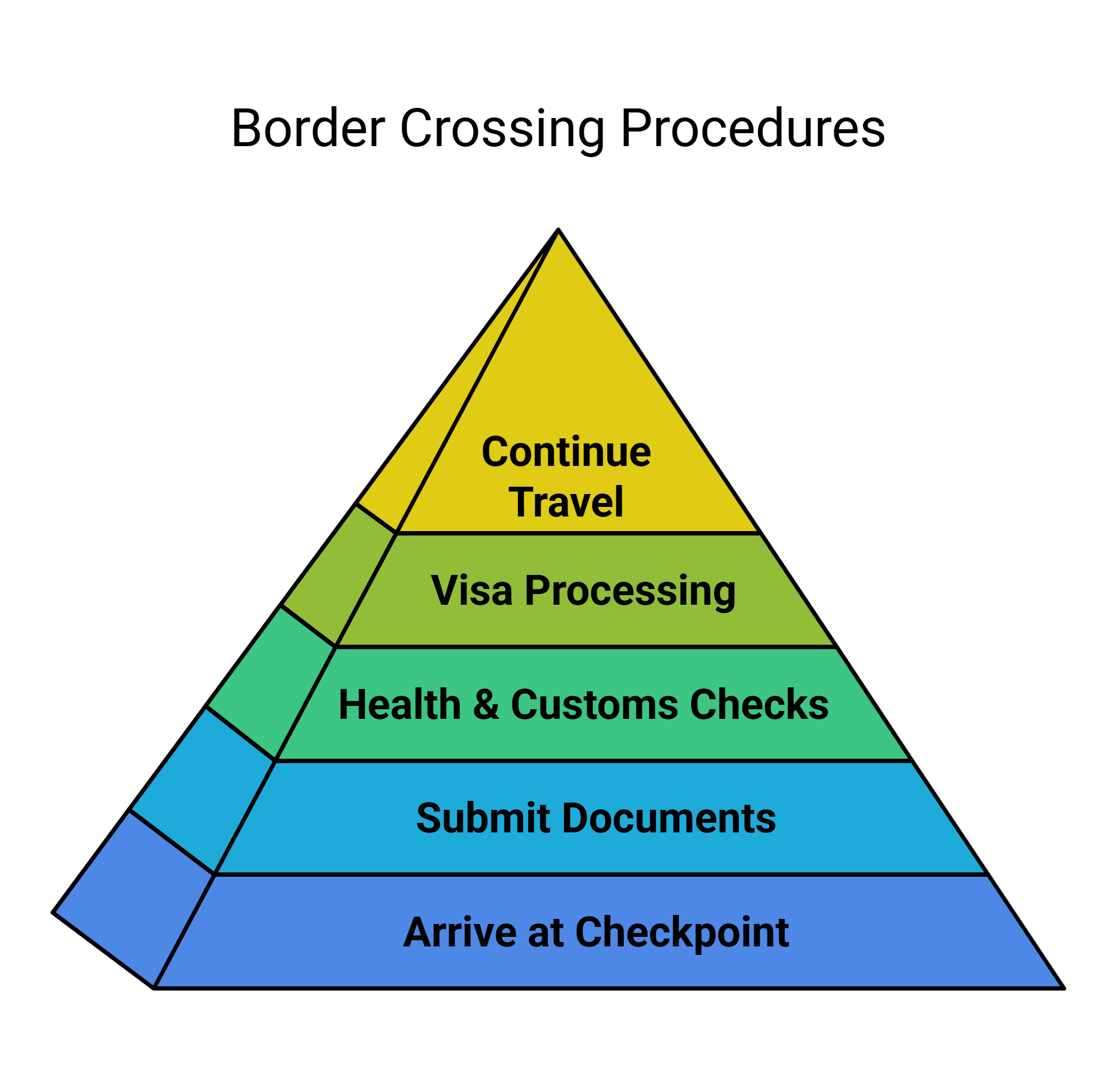
The Laos-Vietnam border connects two culturally rich and geographically stunning countries in Southeast Asia. With a shared border stretching over 2,000 kilometers, it offers various crossing points for tourists, expats, and business travelers alike. Whether you’re traversing rugged mountains, lush forests, or bustling towns, understanding the requirements and logistics of crossing the Laos-Vietnam border will make your journey seamless.
Overview of the Laos-Vietnam Border
The Laos-Vietnam border runs along the eastern edge of Laos, connecting its provinces to central and northern Vietnam. Popular with travelers exploring Indochina, the border provides access to Vietnam’s vibrant cities and Laos’ tranquil landscapes.
Key Border Crossings:
- There are over 10 official border crossings, with some better equipped for tourism and trade.
- Major crossings serve as gateways to cities like Hanoi, Hue, and Da Nang in Vietnam, and Vientiane, Luang Prabang, and Savannakhet in Laos.
Visa Requirements for Crossing the Laos-Vietnam Border
Crossing the Laos-Vietnam border requires careful consideration of visa requirements for both countries. Here's a breakdown:
Entering Laos from Vietnam
- Laos Visa on Arrival (VOA):Issued Laos visa on arrival at major entry points with a valid passport, an application form, one passport photo, and visa fee for residents who are not citizens of Vietnam and are eligible for Laos visa on arrival.
- Visa-exempted Citizens of ASEAN member countries and a few more selected ones will get a visa-free entry with maximum validity for 30 days.
Travelers Entering Vietnam from Laos:
- Vietnam eVisa: Available online; valid entry at key land borders, including Lao Bao and Nam Can.
- Pre-Arranged Visa: Applies to nationalities not eligible for an eVisA or visa-free entry; must be obtained through a Vietnamese embassy or consulate.
- Visa Exemption: Several nationalities, including ASEAN citizens, can enter visa-free for durations ranging from 14 to 30 days.
General Requirements for Both Directions:
- Passport Validity: At least six months beyond the date of entry.
- Proof of Funds and Accommodation: It may be requested by border officials.
- Additional Documents:Depending on the current regulations, one may be required to produce vaccination certificates or health declarations.
Which Laos-Vietnam border crossing accepts the Laos eVisa?
The Laos eVisa is not valid for entry at all land border crossings with Vietnam. The Laos eVisa is primarily intended for entry through international airports and some designated land border crossings with neighboring countries other than Vietnam. You are normally not permitted to enter Laos from Vietnam on an eVisa. Instead, you would have to either get a visa upon arrival at the border crossing or in advance via a Laotian Embassy or Consulate.
Major Border Crossings Between Laos and Vietnam
Here are the most frequently used border crossings:
1. Nam Phao – Cau Treo (Central Laos – Central Vietnam)
- Connects Bolikhamxay Province (Laos) with Ha Tinh Province (Vietnam).
- Popular for travelers heading to Vinh or Hanoi in Vietnam.
- Well-maintained but can be busy during peak seasons.
2. Dansavanh – Lao Bao (Southern Laos – Central Vietnam)
- Links Savannakhet Province (Laos) to Quang Tri Province (Vietnam).
- Commonly used by travelers exploring Hue, Hoi An, or Da Nang.
- Offers good facilities and a smooth process for e-visa holders.
3. Tay Trang – Sop Hun (Northern Laos – Northern Vietnam)
- Connects Dien Bien Phu (Vietnam) with Phongsaly Province (Laos).
- Ideal for adventurous travelers heading to remote areas.
- Roads can be challenging, especially during the rainy season.
4. Nam Can – Nam Khan (Northern Laos – Northern Vietnam)
- Links Xieng Khouang Province (Laos) with Nghe An Province (Vietnam).
- Convenient for visiting the Plain of Jars or traveling to Vinh.
5. Bo Y – Ngoc Hoi (Southern Laos – Central Vietnam)
- Connects Attapeu Province (Laos) with Kon Tum Province (Vietnam).
- Popular for travelers exploring southern Laos and the Central Highlands of Vietnam.
Transportation Options for Crossing the Laos-Vietnam Border
The most accessible and convenient means of crossing the border between Laos and Vietnam is by bus.
- Buses: Regular, relatively inexpensive bus services link major towns in Laos, such as Vientiane, Luang Prabang, and Savannakhet, with border towns in Vietnam, such as Dien Bien Phu, Dong Ha, and Vinh.
- VIP buses: These offer more comfortable journeys with air conditioning and reclining seats.
Other Options Include:
- Minibuses: There are smaller minibuses and songthaews (local shared taxis) available for shorter distances around the border towns.
- Private Transport: Private car or motorbike hire is possible, but this sometimes involves extra paperwork and may be more costly.
- Slow Boats: On the Mekong River, slow boats make an interesting and picturesque option to travel between some border towns, but they are generally slower than land transportation.
Crossing Procedures at the Laos-Vietnam Border
Here's a general overview of the border crossing procedures:
- Arrive at the Border Checkpoint: Head to your chosen crossing point, such as Cau Treo or Lao Bao.
- Submit Documents: Present your passport, visa (eVisa or stamped), and any required travel documents.
- Health and Customs Checks:Complete any health screenings and declare restricted items or large sums of currency if needed.
- Visa Processing and Entry Stamp:Pay visa fees (if applicable), have your documents verified, and receive your entry stamp.
- Continue Onward Travel:Proceed to the other side and arrange transportation like buses or taxis to your destination.

Tips for a Smooth Border Crossing Experience
Crossing any international border requires careful planning and preparation. Here are some tips to ensure a smooth and hassle-free experience when traveling between Laos and Vietnam:
- Check Operating Hours:Most crossings operate between 7:00 AM and 6:00 PM, but check specific hours for your route.
- Carry Local Currency: Some fees are payable in cash, so carry Lao kip (LAK) and Vietnamese dong (VND).
- Travel Insurance: Ensure that your policy is covering cross-border travel and medical emergencies.
- Pack Essentials: Bring water, snacks, and entertainment for long waits or delays.
- Be Patient: Border crossings can be very slow, especially at peak times of travel.
Overcoming Challenges at the Laos-Vietnam Border
Crossing any international border can present unforeseen challenges. Here's how travelers can overcome potential obstacles when traveling between Laos and Vietnam:
|
Challenge |
Solution |
|
Long Queues and Wait Times |
Arrive early, especially during peak seasons. Pre-fill forms and have necessary documents ready. |
|
Language Barriers |
Learn basic phrases in Vietnamese and Lao or use a translation app to communicate with officials. |
|
Visa Issues |
Double-check visa validity, entry points, and travel dates. Seek assistance from border officials if needed. |
|
Currency Exchange Problems |
Carry small denominations of both currencies. Exchange money at reputable counters before reaching the border. |
|
Transportation Delays |
Book tickets in advance and have backup plans for alternative routes in case of delays. |
|
Health Concerns |
Stay hydrated, carry a first-aid kit, and take preventive measures against diseases like malaria and dengue. |
|
Customs and Prohibited Items |
Familiarize yourself with customs regulations to avoid fines or confiscation of prohibited goods. |
Popular Destinations Near the Laos-Vietnam Border
The Laos-Vietnam border offers access to a diverse range of captivating destinations on both sides:

In Vietnam:
- Phong Nha-Kẻ Bàng National Park, Vietnam
This is a park that hosts beautiful caves, including the largest in the world known as Son Doong, with dramatic limestone formations. It is a UNESCO World Heritage site and is very important for nature lovers and adventure seekers.
- Dong Hoi, Vietnam
A coastal town bordering Quang Binh Province, historic and scenic beauty; accessible to Phong Nha-Kẻ Bàng National Park
- Cuc Phuong National Park, Vietnam
Some of them are a few hours from the border, with a reputation for rich biodiversity in endangered species such as Delacour's langur and scenic hiking trails.
- Vinh (Vietnam)
A port city serving as a culture center and providing opportunities to visit neighboring attractions, including the Ho Chi Minh Trail and beautiful beaches along the coast.
In Laos:
- Muang Khammouan, Laos
A quiet town surrounded by limestone mountains, ideal for hiking, visiting caves and waterfalls. The Kong Lor Cave is one of the most famous waterfalls.
- Thakhek, Laos
Thakhek Loop is the entrance to one of the motorbike routes; it offers great views of limestone karsts, caves, and remote villages.
- Savannakhet, Laos
The second city of Laos, featuring French colonial architecture and the sacred That Ing Hang Stupa.
Frequently Asked Questions
Can I use an e-visa at all Laos-Vietnam border crossings?
No, e-visas are only accepted at specific crossings. Confirm your entry point before applying.
How long does it take to cross the border?
The process typically takes 1–2 hours, but it can be longer during busy periods.
Can I extend my visa after crossing the border?
Yes, both Laos and Vietnam offer visa extension options at immigration offices.
Content Disclaimer: While this information was last updated in January 2025, we strongly suggest confirming all travel details with the appropriate governmental agencies, embassies, and airlines.
Steps To Secure Your eVisa for Laos
-
Step1: Fill out the online eVisa application by providing your passport details.
-
Step2: Make the payment online using a credit / debit card.
-
Step3: Check your email for the payment confirmation and the electronic delivery of your visa.
